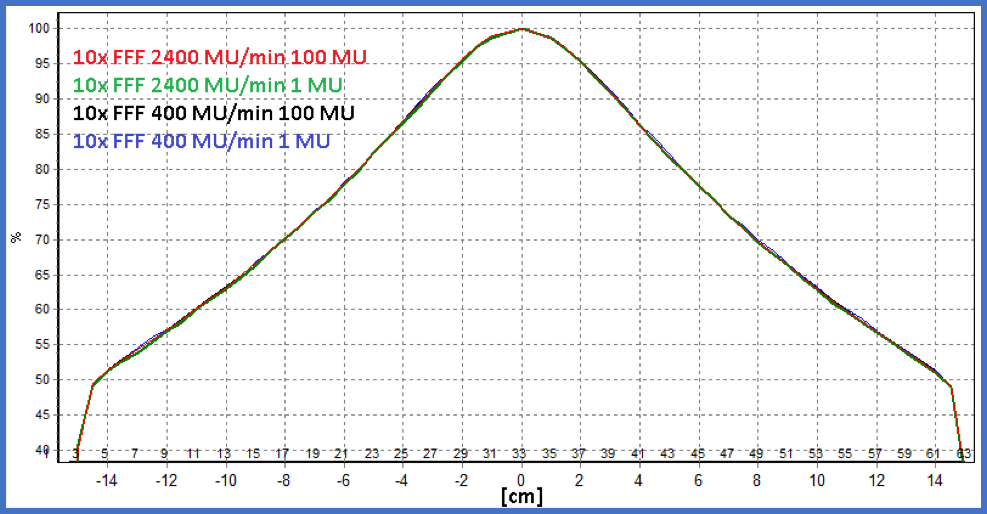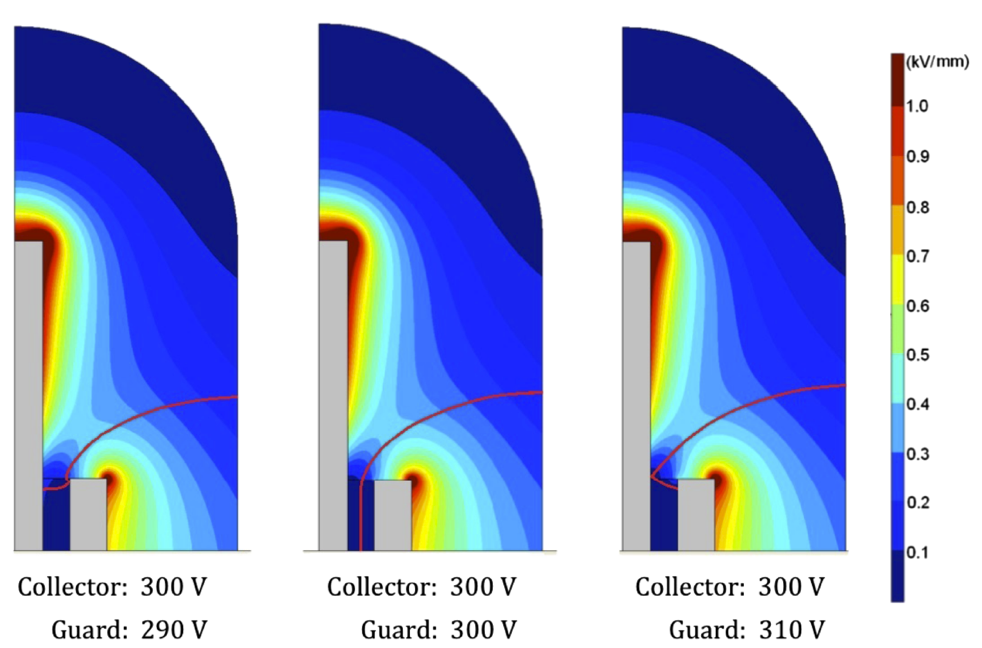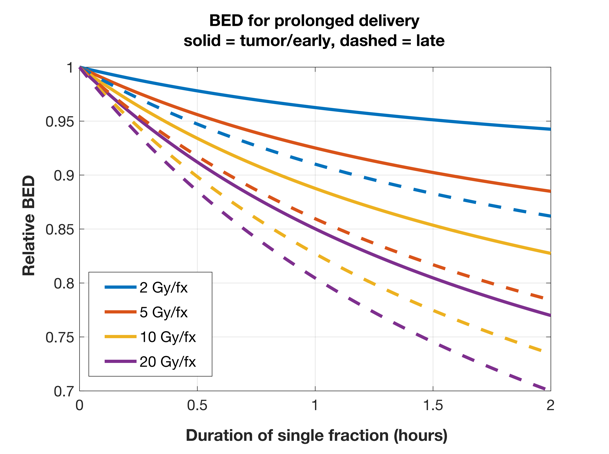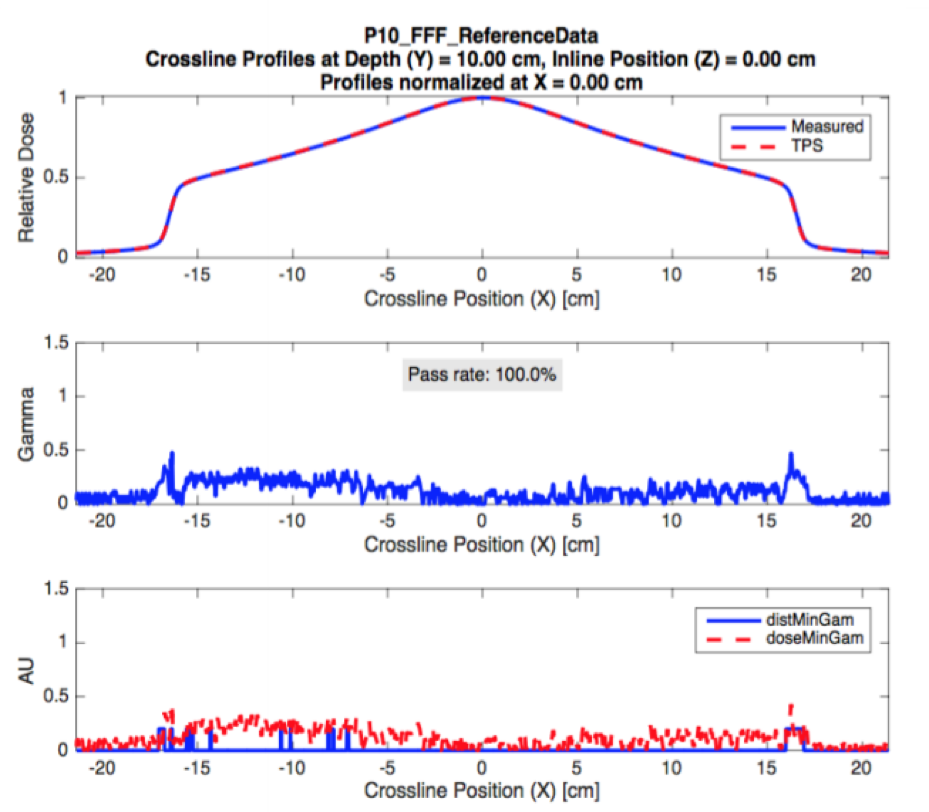The following are descriptions of several radiosurgery research projects that our medical physicists are currently pursuing:
Evaluating Low-Dose-Rate Performance of the TrueBeam Radiotherapy System (Jacqmin)
During the commissioning of our new TrueBeam linear accelerator, we investigated the dose-rate constancy, MU linearity and profile stability of the TrueBeam radiotherapy delivery system over its full range of available dose rates. The verification of dose-rate constancy, MU linearity and profile stability of the TrueBeam radiotherapy system has clinical relevance for a number of treatment delivery techniques. Dose-rate constancy is important for volumetric modulated arc therapy (VMAT), which modulates the dose rate over the range of available dose rates during arc delivery. Dose-rate constancy at very low dose rates (5-20 MU/min) allows pulsed reduced-dose-rate radiotherapy (PRDR) treatments to be delivered continuously rather than in pulses. Dose-rate constancy at very low dose rates also allows VMAT to be used for PRDR treatments. Finally, the verification of MU linearity down to 2 MU gives greater confidence that small MU segments can be used for intensity modulated radiation therapy (IMRT) and field-in-field delivery.

Polarity and Ion Recombination Effects in Microionization Chambers (Miller)
An increase in the delivery of small and nonstandard radiation fields has led to the development of small-volume ionization chambers, commonly categorized as microchambers. Small-volume dosimeters can provide high spatial resolution in areas of steep dose gradients. The University of Wisconsin Accredited Dosimetry Calibration Laboratory has experienced an increase in requests for the calibration of microchambers. This indicates that these chambers are being used for reference dosimetry measurements in a wide range of therapy applications. Unfortunately, microchambers exhibit anomalous polarity and ion recombination effects that are not demonstrated by larger-volume, reference-class ionization chambers. We are working to better understand and characterize these chambers.

Biological Effects of Sublethal Repair During Treatment Delivery
The goal of this project is to investigate how sublethal DNA damage repair during radiotherapy affects patient outcomes. Although sublethal damage repair during radiotherapy has been known for almost 80 years, its study to present has been limited to in vitro studies, simple models and point measurements. Unfortunately, modern intensity modulated techniques deliver extremely complex spatially and temporally variant dose rates across the tumor and nearby critical structures, obfuscating the true impact of sublethal damage repair.
The first component of this project includes development and validation of tools to calculate and measure changes in dose rate during IMRT and model their biological impact to patients. The plot below is a demonstration of the application of the Lea-Catcheside factor to a bi-exponential linear-quadratic repair model, where effects of fraction dose and duration are compared for early and late tissues. Models such as this are being used to calculate the BED as a function of time and spatial position.

Commissioning and Beam Data Collection of Varian Truebeam for Clinical Beam Model
Our treatment planning system relies on accurate modeling of the radiation characteristics. It was our task during commissioning of our new TrueBeam linac (Varian Medical Systems, Palo Alto, CA) to collect the beam data for purposes of input into the model of the treatment planning system.
In this project, we first confirmed the behavior of the linac was in line with specifications, and therefore considered dosimetric equivalent to the Varian Enhanced Beam Conformance (Figure). To optimize the quality of our data collected, we determined the ideal match of the appropriate detector with respect to radiation geometry for each measurement. The beam data collected from our efforts was used to make the standard TrueBeam model for our clinic. Our efforts have allowed for acceleration of the commissioning of subsequently installed TrueBeam linacs, as the matched systems are able to share one model, once the system’s conformance to specification has been validated.
